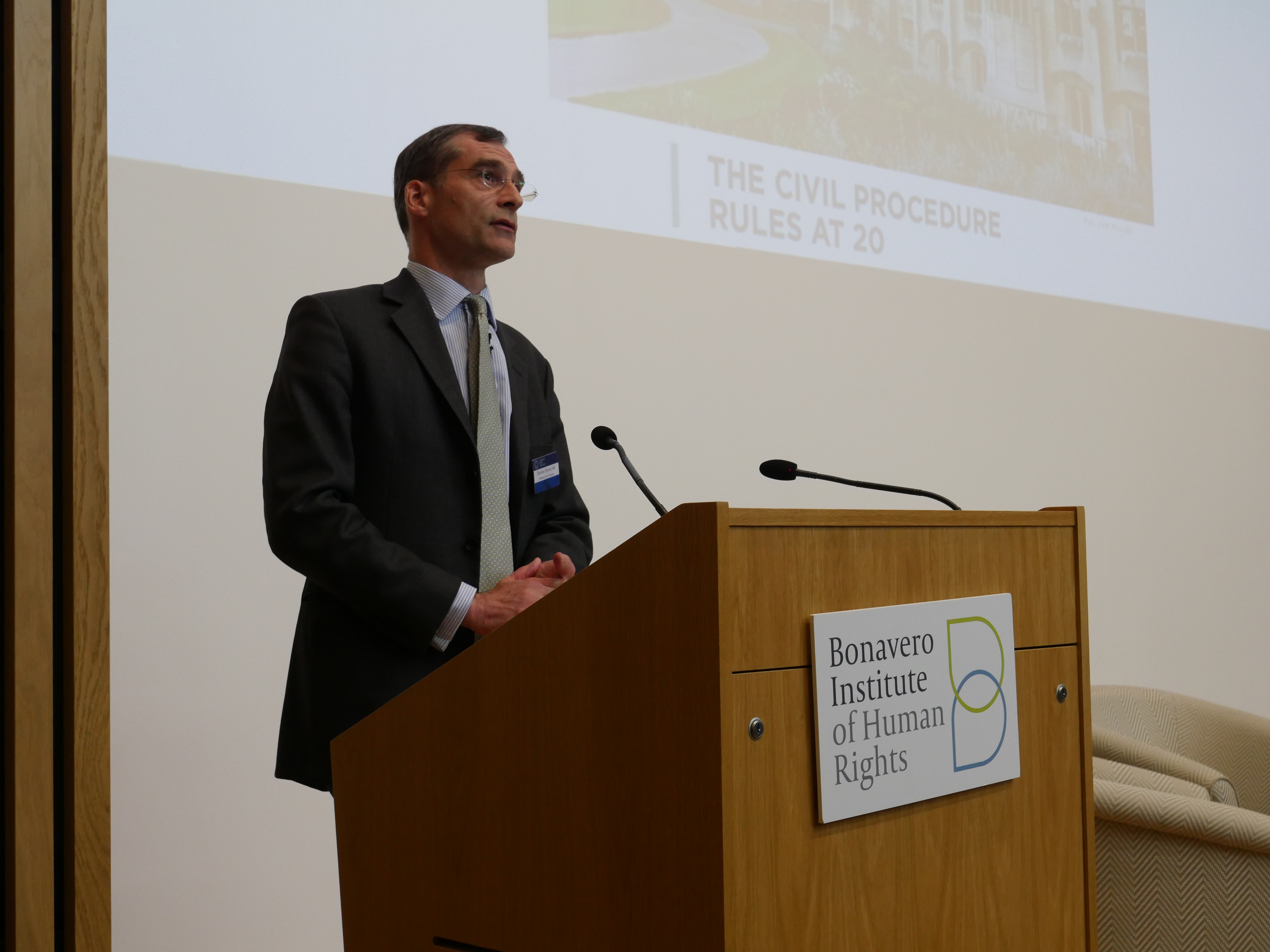Damien Byrne Hill, our head of dispute resolution for the UK and US, reflected on the past challenges and future priorities for the CPR at a conference held at Mansfield College in Oxford last week to mark the 20 year anniversary of the CPR.
Damien's remarks were based on the results of an exercise to canvas views from partners within the disputes practice, through a combination of an online survey and face-to-face interviews. Partners gave their views on how the rules are working in practice, what changes have worked well and what aspects require further attention, in large-scale commercial litigation.
What has worked well?
Damien outlined five areas where there is broad agreement that the CPR, as introduced to implement Lord Woolf's reforms and as subsequently amended, including as a result of the Jackson reforms, are working well.
- First, the introduction of active case management under the Woolf reforms, with a timetable through to trial, so as to remove the need for claimants constantly to go back to court to move the process along. That dramatically reduced cost and delay and meant cases weren't just allowed to go to sleep. In fact it was such dramatic change that many people tend to forget how different the process was pre-CPR.
- Second, the introduction of summary assessment of costs. This meant a huge reduction in the numbers of tactical applications that were brought, as parties realised they might have to pay costs straight away rather than it all coming out in the wash after trial or on settlement. This in turn reduced costs and encouraged cooperation.
- Third, the encouragement of ADR is seen as a success story of Woolf, so that it is now rare for a major commercial case to proceed to trial without at least one mediation. Although there is some debate about the extent to which it was a product of the Woolf reforms, many consider that this culture change was largely brought about by the CPR and their encouragement of ADR at various stages of the process.
- Fourth, the pre-action protocols/practice direction are generally seen as a success, in that they help to narrow the issues and encourage early settlement, although they do lead to frontloading of costs and there is often lots of wrangling about whether parties have complied. But the procedures have helped bring about a culture change where parties engage pre-action to a much greater degree than previously, which is generally seen as a good thing.
- Finally, there is a general perception that procedures for expert evidence are working well, and the introduction of joint meetings and statements has generally been helpful as it can help to identify the real issues in dispute between the experts. The requirement to identify issues the experts will address, rather than merely expert disciplines (which is a feature of the Jackson reforms) is also welcome.
What still needs work?
Damien referred to three areas in which there is a perception that more needs to be done to reduce costs and increase efficiency.
Disclosure
- This is perhaps the greatest challenge. There is broad agreement that disclosure has continued to be overly costly, despite the various attempts to get the process under control, and a disclosure pilot is currently under in the Business and Property Courts with the aim of introducing a more proportionate approach to disclosure and a reduction in costs. However, it is still early days in terms of assessing whether the pilot will have the desired effect.
- The problems with disclosure are not generally seen as a failure of the rules in themselves, but rather a product of the explosion in electronic documents that coincided with the Woolf reforms. While changes to the rules may be of some help, there is a widely held view that the problems with disclosure are caused by IT and ultimately cry out for an IT solution.
Witness evidence
- In relation to witness statements, there is a general view that many witness statements have become too long, too prone to reciting the documents, or too argumentative, but there is little consensus as to what should be done about it.
- There is certainly quite a large degree of consensus among practitioners – and commercial clients generally appear to share this view – that the answer is not to jettison witness statements, which are an important part of the cards on the table approach to litigation that increases predictability and (associated with that) assists settlement.
- The issues are currently being considered by the witness evidence working group and we look forward to seeing what recommendations come out of that process.
Docketing
- From a practitioner's perspective, a key priority is to have a system of judicial docketing which is implemented effectively to ensure that, for major cases, there is a single judge who has a continuing grip on the case.
- At the moment, even where there is a designated judge, we have experience of cases where case management conferences have been listed before another judge, or sometimes multiple judges, and the trial judge did not make an appearance until perhaps PTR stage. This can cause frustration, as it can hamper effective case management, either because the case management judge is less familiar with the case and the issues, or because of the understandable fear of tying the trial judge's hands.
- There are of course challenges with docketing, not least in terms of judicial resourcing, but it is something that would make a significant difference in practice.

Key contacts
Disclaimer
The articles published on this website, current at the dates of publication set out above, are for reference purposes only. They do not constitute legal advice and should not be relied upon as such. Specific legal advice about your specific circumstances should always be sought separately before taking any action.

